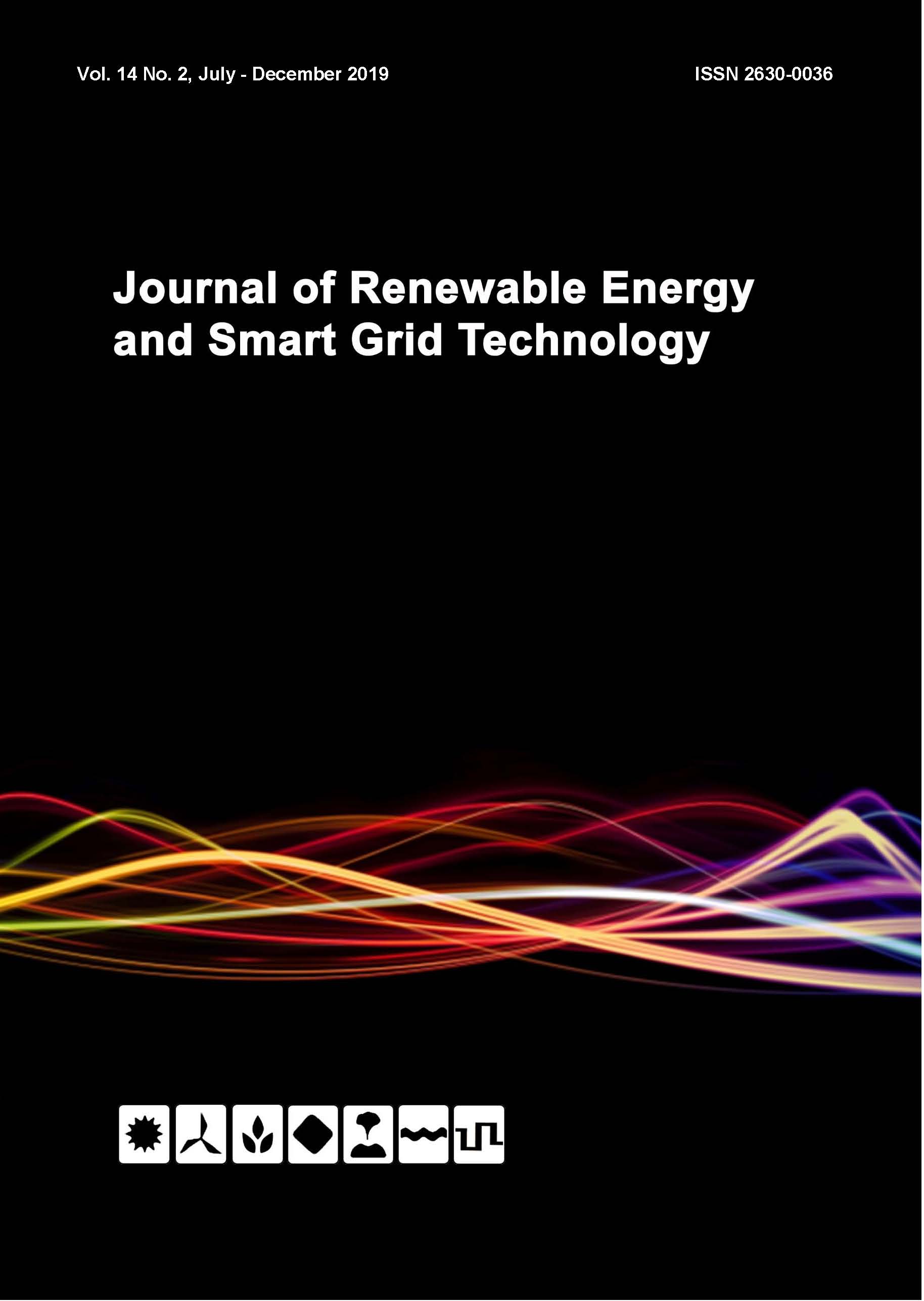Experimental investigation of Pump as Turbine and Induction Generator for Pico hydro Power
Keywords:
Pump as turbine, Three-phase induction generator, motor as generator, C-2C for single Phase induction generatorAbstract
The purpose of this research was to do experimental investigation on using water pump-as -turbine
(PAT) instead of a conventional turbine for pico-hydro systems and modify standard induction motor
to work as induction generator (IG) in order to produce cheaper electricity for rural areas. This Pico
hydropower system was under 1.0kW in range, constructed for experimental bench-scale tests and was
installed on small table. The working experimental system was a close loop water flow system designed
similarly to a pump-storage hydroelectricity system; consisting of intake system part, PAT and the (IG)
parts., A r centrifugal pump of 1.5 kW, 220V was selected as intake system to generate power that
could pump water up to 7.7m with flow rate of 500lit/min (8.3m3/s). This r centrifugal pump (1.5kW,
2.0pole, working speed 2,900rpm) was selected as pump-as-turbine (PAT) to r drive a three-phase
induction motor (or IM) [1.5kW (2HP), 380/220V, 2.0pole, 50Hz)] to run in a reverse mode. This IM
was set up with a correct capacitor size of C-2C configuration to r change operation into a generator
mode. The results of the tests showed that the intake system has the potential to generate hydropower
adequate to r drive the PAT and IG and to rotate over a synchronous speed of up to a maximum speed
of 1,550 rpm. Induction motors can be modified with correct capacitor size C=20 uF and 2C=40 uF
and they can then produce single phase electrical power to supply incandescent light bulbs (load of only
300W, 48Hz, 218V), without damaging any of the components used in the testing.
References
[2] Zainuddin, H., Yahaya, M.S., Lazi, J.M., Basar, M.F.M., & Ibrahim, Z. (2009). Design and Development of Pico-Hydro Generation Systems for Energy Storage Using Consuming water Distributed to Houses; World Academy of Science. Engineering and Technology; Vol 59; 154.
[3] Williams, A. (1995). Pump as Turbine- A user’s guide; 1st; London; Intermediate Technology.
[4] Himanshu Nautiyal, Varun, Anoop Kumar and Sanjay Yadav.;2011; Experimental investigation of centrifugal pump working as turbine for small hydropower system; Energy Science and Tecnology; Vol 1; 80.
[5] Sanjay V, Jain, Rajesh & Patel, N. (2014). Investigation on pump running in turbine mode: A review of the state-of-the-art; Renewable and Sustainable Energy Reviews; Vol 3, 841.
[6] Bansal, (2005). Three- phase Self-Excitation Induction Generators: Overview; IEEE Transaction on Energy Conversion; Vol 20; 292.
[7] Mubarak Shah and Sakda Somkun; Efficiency Evaluation of Three Phase and Single phase C2C Self-Excitation Generator for Micro Hydropower Application; International Conference on Alternative Energy in developing countries and Emerging Economies; Bangkok; Thailand;2017; Pupblisshed by Elsevier Ltd.
[8] Gurung, P., & Freere, P. (2003). Single Phase Output from 3Phase Self-Excitation Induction Generators in Pico hydro system; Destination Renewables; ANZES; 132.
Downloads
Published
How to Cite
Issue
Section
License
All copyrights of the above manuscript, including rights to publish in any media, are transferred to the SGtech.
The authors retain the following rights;
1. All proprietary rights other than copyright.
2. Re-use of all or part of the above manuscript in their work.
3. Reproduction of the above manuscript for author’s personal use or for company/institution use provided that
(a) prior permission of SGtech is obtained,
(b) the source and SGtech copyright notice are indicated, and
(c) the copies are not offered for sale.









